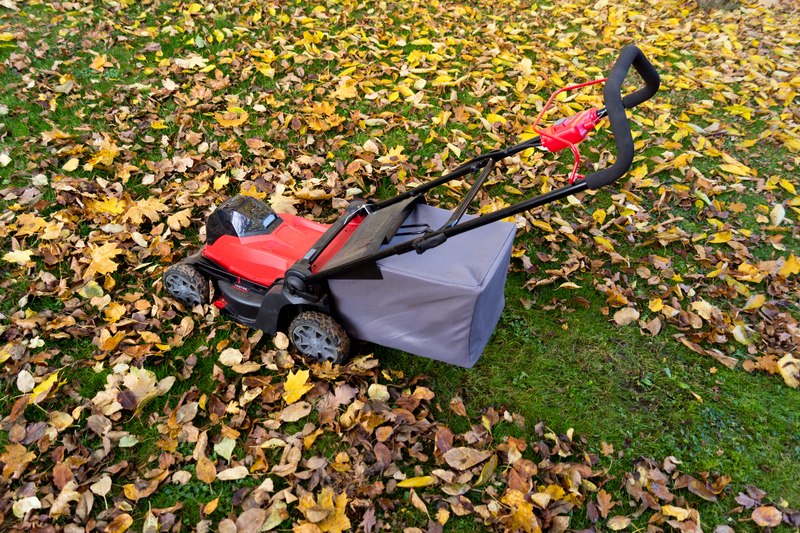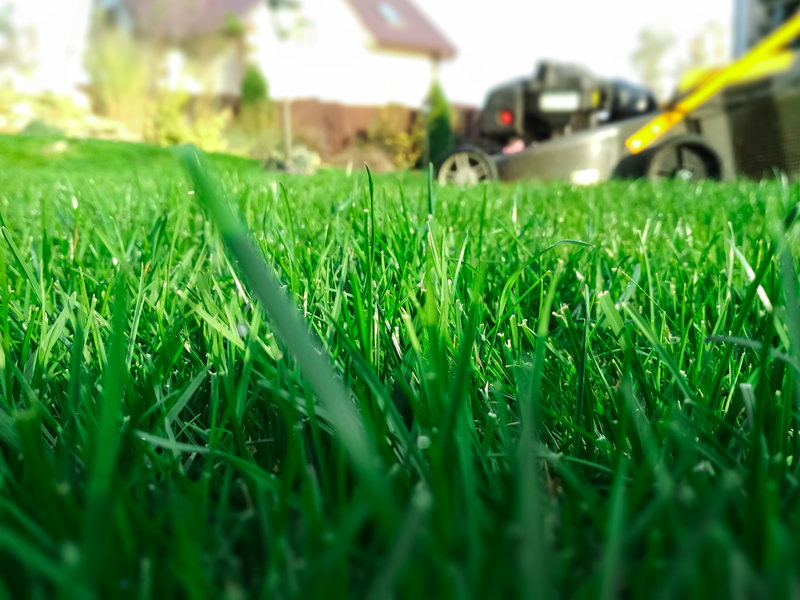==================
A Caveat and Affiliates
First off, a little caveat: within my articles you will find affiliate links, meaning if you buy them, I get a small commission. Your cost is not affected. In addition, I am an Amazon Associate and I earn from qualifying purchases on Amazon.
And yes, if I say that I recommend a product here, it means I truly believe it is a good product. I refuse to recommend any product that I have not researched and believe to be a good value.
Even better, I provide you with a very clear picture of the product, it’s use, and the probable value.
Earning your trust is important to me. I run this website myself and the commissions and donations help support the site.
Sound reasonable and fair enough? Let’s continue to the article.
==================
Lawn care in the fall might not be ideal. During this season, the atmosphere can cause the grass to dormant in winter. Yet for most lawn care experts, fall is a perfect time to ensure a rich and green lawn in the spring. So, what makes lawn care in fall special?
Fall lawn care will help secure abundant growth next spring. The weather during fall encourages grassroots to develop way better than the other seasons.
Here are 10 great ways to take advantage of the season and do fall lawn care properly.
Tip #1 Remove Leaves
Fall lawn care includes dealing with leaves. You see, leaves that fall in autumn can greatly affect your lawn. If you let them stay for too long, you are endangering grass blades. Obviously, grass blades, especially those that are still growing, need as much sunlight as they can get.
With leaves blocking the sunlight, the grass won’t have enough nutrients to store in its roots. Much worse, you encourage diseases and fungi to spread on your lawn. If this happens, your grass may not even make it to winter.
Do a weekly schedule to remove pile-up debris on your lawn. Traditional rake is proven effective compared to leaf blowers in removing thatch. Start as soon as leaves start falling and don’t wait until they build up. Even when there are no leaves left to fall, keep raking to keep the light passages open.
Never rake the lawn when it’s wet. Rainfalls will chock-full the soil with water. When the soil is too wet, there’s a possibility that you’ll risk pulling grassroots while raking. Also, avoid stepping on the lawn to prevent compacting of the soil.
NOTE: Alternatively
Many find that leaving leaves on the ground actually provides a good base of natural fertilizer and protects the ground. Some use a mulching mower which shreds them for easier composting directly into your lawn.
A trade-off for leaving the leaves comes when you have a thick blanket of them on the ground. They might not compost down as well and can actually damage your lawn.

Tip #2 Fertilize
Lawn care experts recommend the fall season, around October to November, as a time to fertilize lawns. Fertilizing will give adequate nutrients to help your grass survive winter and grow healthy in spring. Avoid waiting till grass blades show discoloration due to cold air before applying fertilizers.
Store plant foods at the grassroots will help strengthen and promote grass blade development. Nitrogen-rich fertilizers are best in early fall, and use phosphorus-rich fertilizers in late fall. To know what works best, ask a nearby lawn care professional for the right fertilizer timing in your area.
Tip #3 Deal with Weeds and Pests
Get ready for perennial weeds invasion in early fall. Weeds like dandelion and henbit are active during the cool season. To prevent them from mass spreading, use pre-emergent herbicide when treating your lawn. Treating is more effective if done before the temperature rise. This prevents dropped weed seeds from growing and multiplying until spring.
Pests are also a cause of serious problems. Insects are notorious for damaging grass that grows after winter. Minimize the damage by applying a solution right after you notice pest problems in your lawn. Use pesticides to eliminate common lawn pets like grubs and armyworms.
Tip #4 Lawn Care Overseeding
Overseeding can keep your lawn green and thick. This can also add lawn grass varieties to your old lawn, making it vibrant and pest-resistant. Ryegrass or seeds having 50% ryegrass is advisable. You can choose between annual ryegrass that dies in summer or perennial ryegrass that keeps on growing.
But before you choose, consider first where you are comfortable: having a dormant lawn or doing mowing chores every month. The best time to overseed is in early September till Thanksgiving.
Tip #5 Repairing Bare and Burned Patches
In summer, many lawn patches would be bare and burned because of drought. Reseeding these areas can quickly solve the problem. Remember, though, there are areas that are hard to cover, especially those where seeds can’t reach the soil. If this is your case, you might what to rent or contact services that offer power seeding machines.
Once seeds are appropriately sewn into the ground, new it can sink roots deep into the ground and grow quickly. To ensure this, don’t forget to water the newly seeded areas.

Tip #6 Cover with Turf pieces
One way to repair old lawns is by laying turf pieces or sods. But don’t forget to remove patchy grass before laying sods. And, also, make sure that you finish this 4 weeks before winter. This will give enough time for growth before the long winter arrives.
Tip #7 Lawn Care Aeration
Speaking of summer heat problems, it is also during summer when lawns suffer soil compaction. Soil compaction is caused by pressed soil, resulting in compacted soil pores. And this problem can lead to browning and thinning of grass.
Aeration is the solution to freeing up compacted soil passageways so that nutrients can reach the grassroots. Successful aeration is achievable through professional machinery. Some lawnmowers have an aerator attached. If your lawnmower doesn’t have an aerator, try calling for help. Or if you have a small lawn, you can manually pull small plugs of soil from your lawn.
It is best to aerate the grass before it enters its growing phase. Aerated lawns need around four weeks to recover. You can apply fertilizers after aerating your lawn. This ensures a faster recovery.
Tip #8 Irrigation
Rains during the fall season cause less evaporation and provide enough moisture for the grass. Still, keep monitoring how much water your grass is absorbing. Review your watering schedule, especially when you have an automated watering system.
In late fall and winter, grass doesn’t need water. In this period, lean grass stays green, so cutting irrigation can help conserve water and save money. Just continue it until the grass starts growing back.
Tip #9 Alter Mower’s Height
Don’t over-cut grass as winter nears. Raising the mower for about half an inch in the fall will help increase grass leaves. Grass leaves are essential for capturing and storing nutrients from the sunlight. So, the more grass leaves your lawn has, the more food in the grassroots. A dense lawn can also prevent weeds from multiplying throughout the dormant season.
When winter arrives, you can lower your mow before the snow drops. This time, you can now cut the grass short to prevent snow molds from developing. Cut the grass to as low as 1 inch and remove debris such as leaves and weed pods.
Tip #10 Follow Strict Lawn Care Routine
Follow these lawn care routines strictly! Remember that grass only stops growing when it frosts over in winter. Continue mowing, fertilizing, repairing, aerating, and watering your lawn. Ensure that you conduct the procedures according to their best timing to be more effective.
Is Your Lawn Ready for the Fall and Winter?
We hope you enjoyed these tips for fall lawn care! Fall is the perfect time to take care of your lawn so it can look its best next spring. Be sure to follow these tips to ensure a healthy lawn all season long. Do you have any other tips for maintaining a beautiful lawn? Please leave us a comment and let us know what works for you!
